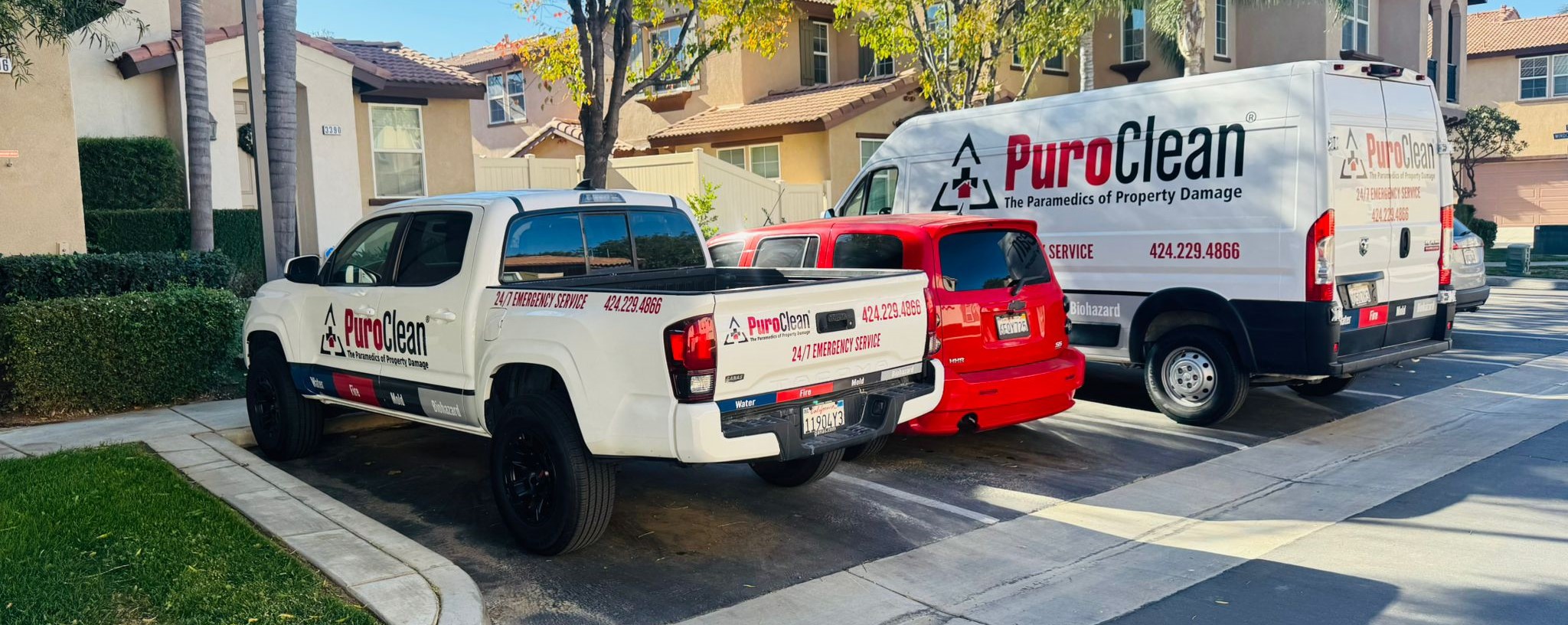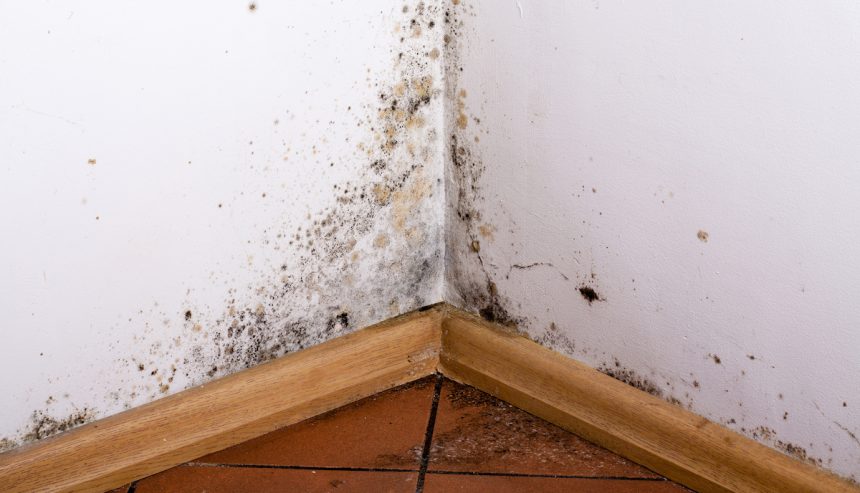Table of Contents

Water damage is more than an inconvenience. Left untreated, it becomes a breeding ground for mold, threatening your health and your home’s structure. In this article, we’ll explore how mold develops from water damage, common causes, warning signs, prevention strategies, and when to call for professional help.
If you’re in Bellflower or the surrounding areas and dealing with water damage, don’t wait, mold can begin growing in as little as 24 hours.
Yes, it can cause mold and it doesn’t take long. Mold can start growing within 24 to 48 hours after moisture exposure, especially in warm, humid environments or when materials like drywall and carpet are involved.
Why Water Damage Leads to Mold
Mold spores are everywhere, indoors and out. They’re usually harmless until they land on a moist surface, especially porous ones like wood, drywall, or fabric. When this happens, they begin to multiply rapidly, releasing allergens and potentially toxic substances.
The EPA warns that excess moisture is the single most important factor in indoor mold growth. Even small leaks, if ignored, can lead to significant mold contamination. (EPA Source)
7 Shocking Ways Water Damage Causes Mold
1. Slow Plumbing Leaks
That tiny drip behind your wall might seem harmless. But over time, it saturates drywall and wood framing, giving mold the damp, dark, and hidden environment it loves.
2. Roof Leaks During Rain
Roof leaks often go unnoticed until water spots appear. But by then, mold may already be forming in attic insulation, ceiling panels, or inside the walls.
3. Flooding and Natural Disasters
Floods from storms, broken pipes, or overflowing appliances introduce gallons of water into your home. Unless removed and dried immediately, mold can form in floors, furniture, and subfloors.
4. Poor Ventilation
Rooms like bathrooms and basements naturally accumulate moisture. Without proper airflow, humidity lingers, leading to condensation and eventual mold growth, especially if past water damage wasn’t treated properly.
5. Appliance Failures
A malfunctioning water heater, dishwasher, or washing machine can leak gallons of water into your home. Even if the leak seems contained, moisture can spread into floorboards or seep into walls.
6. Carpet and Padding Absorption
Carpets are mold magnets when exposed to water. Even after surface drying, padding underneath may remain damp, allowing mold to spread beneath your feet unnoticed.
7. Hidden Damage from DIY Cleanup
When homeowners handle cleanup themselves, they often miss hidden moisture. Without industrial-grade equipment, water behind baseboards or under tile can remain trapped—and mold begins.
How Fast Does Mold Grow After Water Damage?
Mold can start growing in as little as 24 hours and become visible in 72 hours. It spreads rapidly if humidity levels stay above 60%. Mold spores reproduce by the millions and can colonize an entire room if not stopped early.
According to the Centers for Disease Control (CDC), mold exposure can cause respiratory issues, skin irritation, and trigger asthma in sensitive individuals. (CDC Mold Information)
Preventing Mold After Water Damage: What You Should Do
1. Dry Everything Immediately
Use industrial air movers and dehumidifiers. Normal fans won’t cut it. The goal is to remove 100% of the moisture, not just the surface dampness.
2. Remove Porous Materials
Wet drywall, insulation, carpet, and wood can’t always be salvaged. If they stay damp longer than 24–48 hours, mold is almost guaranteed.
3. Sanitize Thoroughly
Once dry, the affected area must be disinfected using an EPA-approved mold-killing cleaner. Bleach is not always effective, especially on porous surfaces.
4. Check Hidden Spaces
Water often travels behind baseboards, under tile, and into crawlspaces. A moisture meter can detect what the eye can’t see.
5. Ventilate the Area
Open windows, install exhaust fans, or use dehumidifiers to keep humidity below 50% during and after the cleanup.
Signs You Already Have Mold From Water Damage
- Musty or earthy odors
- Discoloration or staining on walls or ceilings
- Warped or bubbling paint
- Allergic reactions (sneezing, coughing, headaches)
- Visible mold spots (black, green, or white fuzz)
If any of these are present, especially after a leak or flood, it’s time to call professionals.
Frequently Asked Questions (FAQs)
Q: Can water damage cause mold every time?
A: Not always, but it’s very likely, especially if water isn’t dried thoroughly within 48 hours.
Q: Is mold from water damage dangerous?
A: Yes. It can cause allergic reactions, worsen asthma, and in some cases, produce toxic mycotoxins.
Q: Can I remove mold by myself?
A: Small areas (<10 sq. ft) may be manageable, but anything larger should be handled by certified mold remediation professionals.
Q: Does insurance cover water damage and mold?
A: It depends. Sudden or accidental water damage is often covered. Mold remediation may not be unless it resulted from a covered incident. Always check your policy.
The PuroClean of Bellflower Difference
At PuroClean of Bellflower, we know how stressful and overwhelming water damage can be, especially when mold gets involved.
That’s why we offer:
- 24/7 emergency water damage restoration
- Moisture detection and infrared imaging
- Certified mold remediation
- Safe, EPA-compliant disinfection methods
- Insurance assistance and claim documentation
- Compassionate, expert technicians
Whether it’s a leaking pipe, appliance mishap, or flood, our team is here to restore your home—and your peace of mind.
Call us now on (562) 356-8500 for a fast assessment before mold becomes a much bigger problem.
Final Summary
Yes water damage absolutely can cause mold, often within just 24 to 48 hours. Whether from a minor leak or major flood, any moisture that isn’t properly dried can lead to serious problems. The key is quick action, the right tools, and knowing when to call professionals.
Don’t wait. Call PuroClean of Bellflower to prevent water damage from becoming a full-blown mold disaster.




 PuroClean of Bellflower
PuroClean of Bellflower